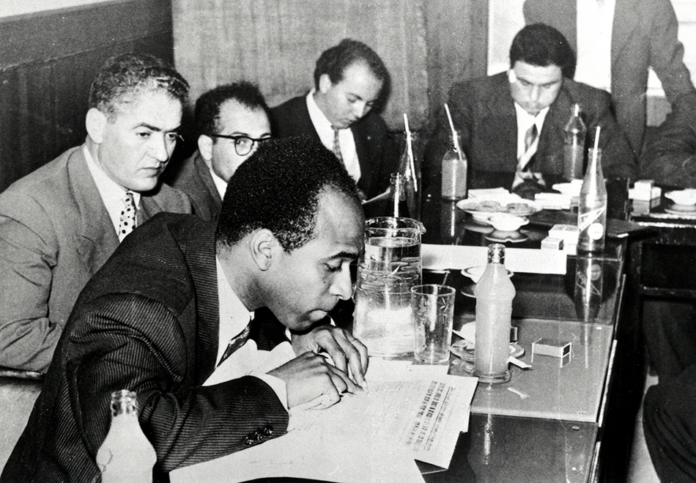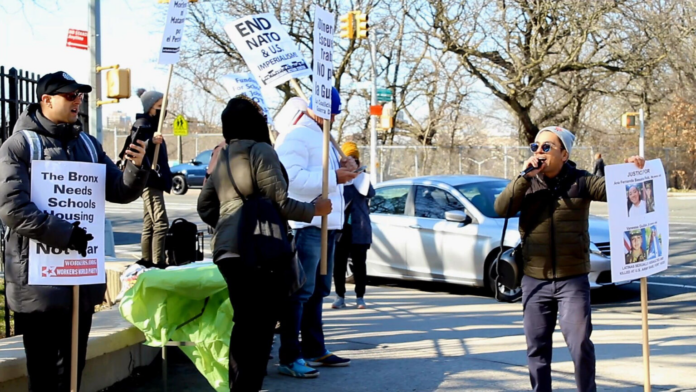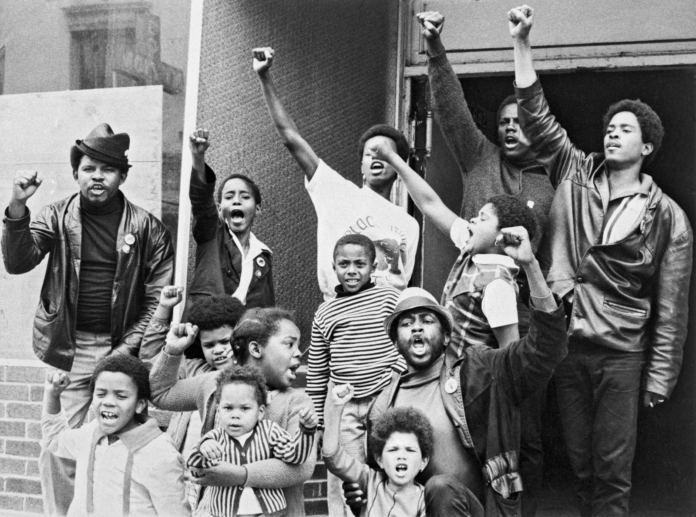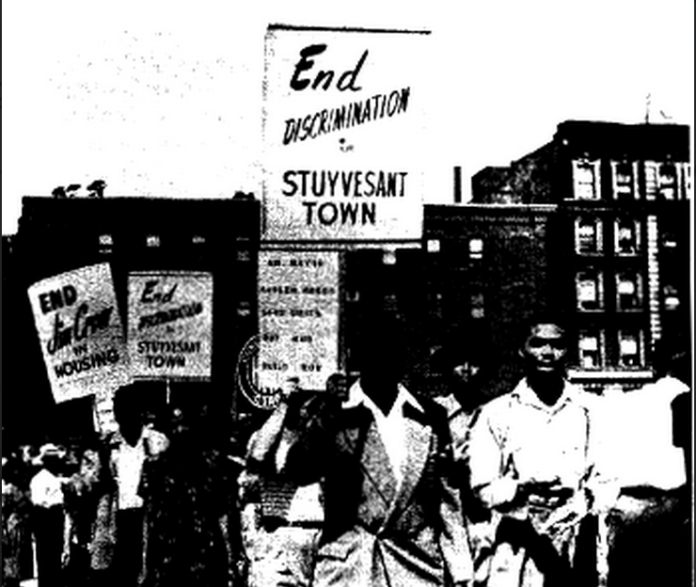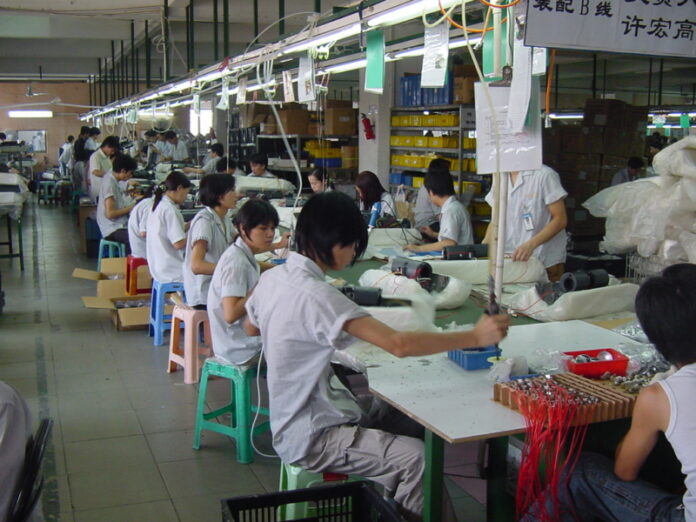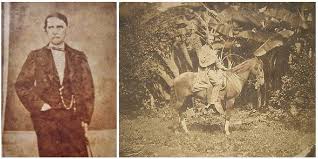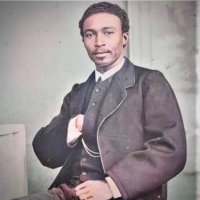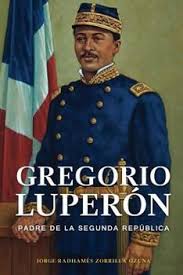Originally published at Covert Action Magazine on November 26, 2021
Putin is considered a threat because he restored Russian sovereignty, erased the humiliation of the Boris Yeltsin era, and championed Russia’s national interests. But that is just what the U.S. elite could not tolerate.
The U.S. military-industrial complex needs enemies like human lungs need oxygen. When there are no enemies, they must be invented.
With the collapse of the Soviet Union, Pentagon spin doctors had to search for a new bogeyman to justify their immense $778 billion budget, and its crippling effect on the U.S. economy. If that meant creating a propaganda campaign to paint Panama President Manuel Noriega—a longtime CIA asset—as a mad-dog “threat to American democracy” in order to justify the 1989 invasion of Panama (whose dead have yet to all be counted 32 years later)—well, so be it.
Or if it meant that other CIA assets, like Saddam Hussein and Osama bin Laden, also had to be painted as dangerous threats to American democracy to justify the invasions of Afghanistan and Iraq, at the cost of countless Iraqi and Afghan lives, not to mention the lives of the thousands of gullible U.S. soldiers who served as cannon fodder—well, so be that, too.

But once those enemies were gone, a new one was needed. And almost as if on cue, the re-emergence of a strong, sovereign Russia in 1999 provided the ideal candidate. It also provided a perfect excuse to initiate a new Cold War, which would justify the ever-increasing expenditures for exotic weaponry that the military-industrial complex kept demanding from its bought-and-paid-for politicians in the White House and Congress.
Russia’s Rebirth from Failed State to Sovereign Nation—and latest “Enemy of U.S. Democracy”
The 1990s had been a decade of humiliation for Russia. Under the compliant, corrupt and alcoholic presidency of Boris Yeltsin, the country became a virtual neo-colony of Western imperialist powers. But the resignation of Boris Yeltsin in 1999, and his replacement by Vice President Vladimir Putin (who was then elected president on his own in 2000), signaled the dawn of a new era—and a new relationship between Russia and its Western tormentors.
Although constant headlines and soundbites have painted Russia (and China, Iran, the Democratic People’s Republic of Korea, Cuba, Venezuela, and every other country that dares to exist outside the hegemonic control of U.S. imperialism) as existential threats to “our” national security, what do Americans really know about Russian society and foreign policy?
What is the correct class characterization of the Russian Federation? Why is the Biden government continually slapping new sanctions on Russia and expelling its diplomats? What is behind the new and recycled national religion of Russophobia? This article will begin to address these questions.
Restoring a Strong and Proud Russia
Russia is a medium-sized capitalist power — having the 11th largest GDP in the world, after 10th place South Korea and before 12th place Brazil. For comparison, the U.S. has a productive capacity 20 times that of Russia. This is the reality for a country trying to assert its interests, after a quarter century of ignominy, in a world order that has been thoroughly dominated by the United States and Western European powers.
Oligarchs and the capitalist Russian state are the central players in the $1.46 trillion Russian economy today. The socialist basis that underscored Russia’s relations with its smaller neighbor republics has been replaced by capitalist interests, and Russian national chauvinism is now widespread.
Vladimir Putin represents the nationalist section of the Russian bourgeoisie. In stark comparison to Boris Yeltsin and his cronies, Putin’s main objective is the return of a strong, proud Russia on the international stage. An ex-KGB agent who has been accused of assassinating his enemies and adopting strong-armed methods reminiscent of the Soviet era, Putin is immensely popular nevertheless in his homeland, especially when compared to the man who preceded him.
For two decades, the Putin administration has had as its chief foreign policy objective the creation of geopolitical breathing space to allow the country to restore its former power, restore itself as a major player in global politics and begin to catch up with the West.

Marlene Laruelle, Director of the Institute for European, Russian and Eurasian Studies at The George Washington University, explains that slapping the fascist and totalitarian labels on Putin and Russia are not scholarly but are rather politicized attempts to discredit Russia in order to prevent the country of 144 million from being taken seriously in the international arena.

Professor Nicolai N. Petro, who holds the Silvia-Chandley Professorship of Peace Studies and Nonviolence at the University of Rhode Island, makes a similar argument, and points to many positive innovations under his leadership, including vital reforms in the Russian criminal justice system.

According to these authors, Putin is popular because he guarantees a certain stability for the elites, oligarchs, civil servants and other powerful sectors of Russian society. Many ordinary Russians furthermore recall the economic devastation of the Yeltsin era, and connect Putin with the economic improvements that have taken place since that time—even if certain hardships remain.

Laruelle’s scholarship concludes that the Russian state draws from myriad ideological sources, such as social conservatism, Soviet nostalgia, illiberalism, Russian orthodoxy and Russian nationalism. In her book, Is Russia Fascist? Unraveling Propaganda East and West, she explains: “If there is an overarching ideological trend to identify, it is illiberalism…:a denunciation that holds that liberalism [capitalism, imperialism, Western hegemony, words the author never uses in her book] is now ‘obsolete’ and has ‘outlived its purpose,’ as Putin declared in 2019, and a return to an ideology of sovereignty—national, economic, and cultural-moral sovereignty.”[1]
The Backdrop of Putin’s Victory
For a people long accustomed to the egalitarianism and socio-economic rights of the Soviet Union and being equal operators on the world stage diametrically opposed to the most powerful empire in history, the 1990s return to being a vassal state of the West was a shock.
French economist Thomas Piketty charts the rise of income inequality and Russia’s descent into “a society of oligarchs engaged in grand larceny of public assets.”[2] The voucher system (1991-1995) concentrated wealth in the hands of billionaires as state assets were sold off to the highest bidder. Western advisers from the IMF and World Bank oversaw a monetary system that completely rejected the idea of inheritance and progressive taxes.
The post-communist system taxed everyone the same, regardless of whether they made a living as a fruit vendor or were a gas magnate, at 13%. Tax havens that deprived society of much needed social capital were the norm. Piketty’s Capital and Ideology concludes that Russia’s economic paradigm was to the right of Reagan and Thatcher and became the West’s freakish experiment in hyper-capitalism.

This explains why Yeltsin became a darling of the West and was described on covers of Time magazine at different moments as a maverick, a revolutionary and Bill Clinton’s “comrade.”

Russia expert Jeremy Kuzmarov explains the stark contrast between Yeltsin’s and Putin’s leadership:
“Putin’s vilification stems largely from the fact that he has promoted more nationalistic policies compared to his predecessor Boris Yeltsin who opened up the country to shock therapy specialists (Harvard University advisers) who advanced ill-conceived privatization schemes that led to record poverty and corruption levels in Russia during the 1990s. Over $150 billion left the country in just six years, much of it to be stored in Western or off-shore banks. Desperate Russians sold off privatization vouchers to avert starvation. Millions lost their life savings after Russia defaulted on its debt and devalued its currency, and life expectancy plummeted by over seven years for men.”[3]


Why Is Putin Popular?
According to a German polling agency, Putin’s approval rating has consistently been above 75%. The reason for this figure, as noted, is that Russia’s economy has improved dramatically under his rule from the 1990s, and Russia has reasserted itself on the world stage.

To understand the ire that Putin inspires from ruling circles in the West, we must return to Russia’s recent history. In an extensive interview with “The Empire Files,” entitled “Post-Soviet Russia: America’s ‘Colony’ to #1 Enemy,” journalist Mark Ames lays out a basis for why Putin’s leadership is so unforgivable to the would-be conquerors of one of the most strategic and rich regions of the world.
Ames lived in Russia under both Yeltsin and then Putin. He speaks on the trauma that Russian society felt when it went from the most equal to the most plutocratic society on earth, almost overnight. Some of the world’s largest gas reserves and one-third of the world’s nickel were auctioned off.

In 1998 the Russian stock market fell 95%, the ruble lost its value, there were food shortages, the state collapsed, teachers were not paid and one-third of the country returned to subsistence farming. At the end of the 1990s, as Western media heaped praises on their new neo-colony, Russians were sick of being experimented on. Ames sees the U.S.’s unilateral bombing of Kosovo in 1999 targeting Yugoslav/Serb forces allied with Russia as the final straw that angered the Russians, leading to a national sentiment of “the communists were right. We are next [on the chopping block].”
Kuzmarov’s “‘A New Battlefield for the United States’: Russia Sanctions and the New Cold War” offers a portrait of what Putin’s leadership has meant for everyday Russians:
“Famed Russian author Alexander Solzhenitsyn stated that ‘Putin inherited a ransacked and bewildered country. And he started to do with it what was possible—a slow and gradual restoration.’
This was in part achieved by ordering oligarchs to pay taxes, by regaining national control over oil and gas deposits sold off to Exxon and other Western oil companies under Yeltsin, and implementing policies that improved infrastructure, living standards, and led to a decrease in corruption and crime. Inflation, joblessness, and poverty rates subsequently declined while wages improved and the economy grew tenfold. Putin cut Russia’s national debt, stymied the exodus of Russian wealth abroad and put in place a successful pension system.”[4]

Like the Bolsheviks a century before, the underdog was standing up to the global Goliath.
A devastated people were searching for another way. This was the power vacuum that gave rise to Putin. Putin did not drink. He was serious. He was a former intelligence officer in the KGB.

Challenging Unipolarity
Jack Lew, Obama’s Treasury Secretary, said that economic sanctions are “a new battlefield for the United States, one that enables us to go after those who wish us harm without putting our troops in harm’s way.”

In Russia’s Response to Sanctions: How Western Economic Statecraft is Reshaping Political Economy in Russia, Professor Richard Connolly from the University of Birmingham assesses how the government is building a multipolar world by increasing trade with Washington’s other targets, such as China, Iran, and Venezuela.

On October 15th, Russia and Venezuelan representatives wrapped up the Intergovernmental Commission XV and Business Forum II where they agreed to continue cooperation in strategic sectors like agriculture, industry, fishing and cultural affairs. The U.S.’s hybrid war on Iran has pushed the country toward the Russian and Chinese anchored Shanghai Cooperation Organization, to the alarm of think tanks in Washington, Tel Aviv and Abu Dhabi.
These new alliances have led the global dictator to lash out in insane ways, imprisoning diplomats and trade ambassadors, most famously Alex Saab, who shun and bypass their dictates. Washington’s own overstepping and sanctioning of one-fourth of humanity has organically led the blockaded countries to increase trade with one another.
Critiques from the Russian Left
Putin to be sure has black spots on his record and has faced legitimate criticism from his domestic political opponents.
Gennady Zyuganov, leader of the Russian Communist Party (RCP), criticizes the repression of the opposition by forces under Putin, hostile takeovers of state-owned enterprises, and “cannibalistic pension reform.” The RCP has denounced the banning of Alexei Navalny’s website and restrictions of any protest. This view sees the other four major parties in the Duma as a controlled opposition all loyal to United Russia, proving there is little more than a semblance of a democratic structure.

“Staying the Course” is a YouTube channel run by Russian communist Vasily Eremeyev. Еremeyev contrasts Soviet parliamentary democracy and right to recall politicians versus the buying of congressional and duma seats under capitalism. The channel has also been vocal about the privatization of health care and education and the lack of taxes on the oligarchy. Inequality in Russia today is worse than in the U.S.
Russia Today (RT)
RT, formerly Russia Today, is the Russian state and private media behemoth with subsidiaries and projects such as Sputnik radio stations, RT news in different languages and Redfish documentaries. The producers, who hire the anchors, edit the story lines and invite the guests, project a hodgepodge of ideological lines that can cause great confusion if not unpacked.
Young revolutionaries in Russia have pointed out how RT (Russia Today) and their affiliates sometimes invite anti-imperialist guests and project left-leaning critiques of imperialism to provide a cover for Moscow’s true ideology. Russian state and private media use such guests in the same way that they use their right-wing guests, to deepen fissures in Western society. By giving voice to both ideologies that are shut out of liberal, mainstream discourse, their intention is to heighten the social contradictions in the West. They imagined a so-called “Red-Brown alliance,” where the Left and Right would unite in an anti-globalization movement.
RT has had frequent pieces against migration and voiced support for Hungarian Prime Minister Viktor Orbán and the French right wing. Putin prides himself on being anti-progressive and anti-woke. His recent speech in Sochi showed a callous misunderstanding of the history of white supremacy, misogyny and homophobia in the U.S. Again, we see the similarities to Trump’s rhetoric.
RT plays a counterbalancing, counter-hegemonic function. Time magazine’s exposé of RT, “Inside Putin’s On-Air Media Machine,” presents charts of how many millions of people the record-breaking RT is reaching worldwide versus BBC, VICE, ABC and other mouthpieces of the global power structure. Presenting itself and Western media as objective, Time presents RT as a mouthpiece of the Kremlin.
This is part of the backdrop that gave rise to the fanatical, wildly exaggerated claims by CNN and The New York Times that Russia intervened in the 2016 elections and put Trump into power. These critics see RT as providing a leftist façade for foreign consumption as an illiberal system targets and destroys the real Left at home in Russia. This is similar to the Iranian state that is not fundamentally socialist but echoes talking points of global anti-imperialist forces.

At the same time, Russian state actors are reviving “white ideology,” the pro-tzar and pro-monarchy resistance to the Bolsheviks and Red Army. Laruelle documents Putin’s paying honor to former white generals and exiles while spending resources on the rehabilitation of collaborationists through cinema and monuments. The mausoleum that holds Lenin’s body has been “under construction” since 2005.
At the May 9th WWII Victory Day parade, the Russian flag has replaced the Soviet flag. Vague references to “our ancestors” have replaced any mention of the Red Army’s and Soviet people’s heroic role in defeating the Nazis. In the informational war with the right-wing coup-mongers in Kyiv, Russian leadership often pointed at their fascist character. Eyewitnesses were alarmed at the anti-Ukrainian sentiments that were shoulder to shoulder with internationalist motivations in the Donetsk People’s Republic and the Luhansk People’s Republic.
There is a definite split in the U.S. ruling class toward Russia. Since Putin is a conservative nationalist but not a leftist, Fox, Breitbart and Newsmax tend to portray Putin more favorably.

The alternative media are all over the place, with outlets like Democracy Now echoing the mainstream media and bringing on guests like Masha Gessen who are anti-Putin. Bernie Sanders, Alexandria Ocasio-Cortez and Maxine Waters are a few examples of “progressive Democrats” who have helped advance Russophobia. Trump, initially promoted more engagement with Russia but ultimately continued a confrontational approach and expanded sanctions and tore up arms control agreements like the Intermediate Nuclear-Range Force Treaty (INF). Trump’s initial policy was unacceptable to the true ruling class which had long ago decided that Trump was not “presidential.”

This honest overview of RT begs an important question: Should an anti-imperialist engage and offer analysis for RT or PressTV and HispanTV (the Iranian equivalents)? Should a committed anti-imperialist use these platforms to expose U.S. crimes from Honduras to Ukraine to Haiti? This is a most intriguing question for each radical organization and Marxist-Leninist party in the center of world imperialism to determine for itself. Organizing does not take place in the realm of purity but advances with setbacks and contradictions. Can Russia, with all of its social and economic contradictions, still be an ally for the forces of liberation fighting capitalism and white supremacy?
Is Russia Imperialist?
Russia may have committed many condemnable acts, but it is surely overblown and unscientific to call it “imperialist.”
In fact, for the last 25 years since the collapse of the Soviet Union, Russia has done little to stop the U.S. war drive in country after country. Under Yeltsin, the Russian government was essentially subordinate to Washington. Until the 2013 neoliberal Maiden Coup, the Russian government hoped that if it did not challenge Washington in Latin America, the Middle East and Asia, and on its own borders, in exchange it would be allowed to grow again as a strong country. The absence of Russia as a strategic counterpoint has in fact been a dominant pillar of the U.S. unipolar world order, which has caused so much death and destruction.
If anything, Russia should be criticized for its passivity in the NATO/U.S. war on Libya in 2011 and allowing Western imperialist power to bomb a country with which it maintained strong relations. Russia abstained from the sham UN resolution that empowered the Western coalition to effect regime change but did not use its veto. At a crucial moment, Russia abided by another resolution to stop all arms sales to the Libyan government.
In 2015, for the first time, Russia drew the line to support its one remaining military ally in the Middle East: Syria. Russia’s intervention was not a sign of some grand design to take over the Middle East; Russia has nowhere near the military or economic capacity to even consider this task. It intervened directly, four years into the war, because it saw in the internal contradictions of the Obama administration an opportunity to step in and prevent a repeat of Libya. Unlike every U.S. coup, the Syrian government openly invited and welcomed Russian support against ISIS and its international backers.
From the perspective of the Syrian people and anti-imperialists the world over, Moscow provided critical military support to the Syrian government, as well as anti-aircraft weaponry that undoubtedly staved off direct U.S. bombing of Damascus.

The two Russian actions that most angered the West were really quite reasonable, and taken to protect its only warm water ports—the Crimean port of Sevastopol and the Syrian port of Tartus. Both were very important to Russia because its seven home ports—at Novorossiysk, St. Petersburg, Vladivostok, and other locations—froze over and severely crippled its capacity to trade in the winter months.
On account of this changed relationship of forces, Syria miraculously held on, and Russia issued the U.S. a challenge like no other in the era of unipolar U.S. domination.
Warding off U.S. imperialism in Syria and Eastern Ukraine was therefore a sensible action in light of national interests. Russia was not the aggressor.
U.S. military spending dwarfs that of Russia, $778 billion annually to $61.7 billion. U.S. military capacity exceeds that of the next eleven strongest militaries combined. With such glaring social needs, how does the Pentagon justify its 778 billion dollar budget? This is more than double what the Build Back Better legislation proposes: $350 billion a year on social investment.

As if David were not sufficiently intimidated and overpowered by Goliath, the U.S. military machine also has its NATO allies operating on Russia’s doorstep. If Russia objects and dares to defend its borders, any NATO member has recourse to Article 5 of its charter, which lays out that “An attack on one member is an attack on all.”
In June of this year, NATO, the U.S. Sixth Fleet and Black Sea nations carried out Sea Breeze 21 “to enhance interoperability among the participating nations” on Russia’s borders. Some 32 countries participated, including most NATO members and the U.S. client-regimes such as Egypt, South Korea and the United Arab Emirates.

Of course, any sort of multi-polar imperialist system, should one take shape in the future, must be strenuously fought as well; the needs of poor and working people cannot be met with capitalism or imperialism in any form. But to condemn Russia as co-equal to the United States has no basis in history and mischaracterizes Russian foreign policy.
This wrong analysis misinterprets the relationship of forces in global politics and the meaning of the Syria and Crimea intervention, and it preached neutrality at the very moment that a sovereign country of the formerly colonized world, Syria, is—for the first time since Vietnam—on the verge of withstanding the U.S. Empire.
Russia’s Geopolitical Interests
It is important to clarify Russia’s motives and the role it has played in Syria.
Russia’s support of the Assad government was not ideological; it was practical. For one, the overthrow of the Assad government by proxies of Western power and Gulf monarchies would have transformed Syria into a client-state that would likely have shut out Russia’s access to its warm water port at Tartus. It would also have blocked an important part of China’s Belt and Road Initiative, for which Syria’s access to the Mediterranean was to function as an alternative to the U.S.-controlled Suez Canal.
Regime change in Syria would also have freed the Pentagon to pursue its next target in the region—perhaps Iran—and allow the U.S. to further tighten the screws on and encircle Russia itself. Much of Russia’s foreign policy is driven by the real fear that the United States has so little respect for national sovereignty that it will inevitably turn its attention to regime change in Russia itself. In some ways this campaign has already begun, as the West has thrown all of its ideological machinery behind neoliberal opposition leader Aleksei Navalny.
On October 20th, the EU granted Navalny the Sakharov Prize for Freedom of Thought, its top Human Rights award—reserved every year for a dissident of a government that Western imperialist nations are actively seeking to overthrow.

In this case, Russia’s pursuit of its own national interests overlapped with the interests of preserving Syria’s national independence from imperialist regime change and the social and cultural counter-revolution offered by the Saudi and U.S.-supported Salafists.
Russia to be sure has secured access to the Syrian warm water port at Tartus—a leased military installation of the Russian navy—though it stands to gain little economically from its intervention in Syria.

Russia’s re-entry onto the world stage has caused alarm for the unipolar hegemon. Turkey and the U.S. are warning that the Russian paramilitary outfit, the Wagner Group, under Russian government control, is involved in conflicts from Libya to Syria to the Central African Republic to Eastern Ukraine.

U.S. think tanks like the Center for Strategic and International Studies see “Russia’s Blackwater” as potentially tilting the balance in these regional conflicts in favor of social forces hostile to imperialism. While the CIA wields its budget of billions to destabilize countries which refuse to stay in their neocolonial place, the U.S. brass is not accustomed to dealing with other international actors who seek to subvert its order. Jeremy Kuzmarov’s book The Russians are Coming, Again is an important review of this New Cold War propaganda.[5]
The reality however is that Russia’s single existing military base outside of the territory of the former Soviet Union is in northern Syria, near the city of Latakia (approximately 500 miles from Russia’s southern border.) Compare this to the 800 known U.S. military bases and installations and hundreds of thousands of U.S. troops occupying 140 different “sovereign” countries in the world.

Russia: Bullied, Sanctioned, Blockaded and Surrounded
In 2013, the European Union and the U.S. government helped orchestrate the Maiden counter-revolution, a right-wing coup in the former Soviet republic of Ukraine. NATO powers regularly carry out war drills meant to intimidate Russia. For example, Britain sent 800 troops to the Russian border in Estonia. NATO is not just serving as the most strategic imperialist vehicle but effectively as an anti-Russian alliance.

The U.S. refused to invite Russia, for instance, to join NATO even in the Yeltsin years when U.S.-Russia cooperation was at its highest. U.S. strategists believed that, as Russia regained its strength, it could potentially form a partnership with France and Germany and eliminate U.S. control of NATO. Instead, it promised it would not bring NATO any further east, into the former Soviet Union, but it has repeatedly broken this promise.
Imagine if the relationship were reversed and Russia was deploying its armies and prosecuting wars on America’s doorstep. If Russia were funding a proxy war in Mexico (Syria), engineered a coup in Canada (Ukraine) and were mobilizing troops in Puerto Rico (Estonia), would anyone expect the U.S. to capitulate?
This interactive map shows how the U.S. and NATO have Russia surrounded.

There was speculation that the Trump administration could have offered Russia a sort of deal: a warming of relations between the two countries in exchange for Russia agreeing to the partition of Syria and the isolation of Iran. There was considerable speculation in the corporate media about Trump’s goal to work with Russia at the expense of China as well.
A correct position on the U.S. proxy war against Syria derives from a defense of oppressed countries’ right to self-defense and complete opposition to imperialist regime-change efforts. The Salafists’ overthrow of the Syrian bourgeois-nationalist and secular state, despite its many problems and contradictions, would constitute a huge step backward for the people and for the region—a counter-revolution in social terms that would likewise destroy Syria as a nation-state.
This should not be misunderstood as an embrace or endorsement of the political system of Syria, of Assad as an individual leader or of Baathism. Rather it is a recognition of the stakes of the current war, and that no socialist left-wing transformation of Syria has been on the table in the ongoing ten-year, life-and-death struggle.
Dialectics
This level of analysis raises critical questions that the U.S. military-industrial complex and the foreign policy establishment do not want the public to focus on. Instead, the corporate media, as the mouthpieces of the U.S. establishment, have a vested interest in making Russia the bad guy and the U.S.’s “democracy” the victim. Consequently, a U.S. state ideology of Russophobia permeates every sentence of The New York Times and Rachel Maddow’s teleprompters shaping millions of Americans’ myopic views of this massive, complex country.

Predictably, only 22% of Americans now view Russia favorably. The constant accusations of Russia’s meddling in U.S. elections and hacking are highly inflated and politicized to serve as the rationale for the ongoing anti-Russian offensive. The never-verified charges are especially hypocritical when one considers how much electoral interference—and how many post-WWII military coups—the U.S. intelligence agencies have orchestrated from Southeast Asia to the Middle East to South America and in Russia itself.
A revolutionary in the belly of the beast should have no illusions about the Russian state being a return of a Soviet Workers’ State that often stood in solidarity with national liberation movements across the world in the Global Class War, known by its Western euphemism, The Cold War.
At the same time, a genuine progressive can appreciate why blockaded and besieged Venezuelans, Syrians, Zimbabweans, Cubans, and Iranians, and oppressed people the world over, see Putin as a fearless badass and Russia as an ally who has stood up to the U.S. empire in defense of the sovereignty of oppressed nations.


- Marlene Laruelle, Is Russia Fascist? Unraveling Propaganda East and West (Ithaca, N.Y.: Cornell University Press, 2021). ↑
- Thomas Piketty, Capital and Ideology (Cambridge, Mass.: Harvard University Press 2020). ↑
- Jeremy Kuzmarov, “A New Battlefield for the United States: Russia Sanctions and the New Cold War,” Socialism and Democracy, August, 2020. ↑
- Kuzmarov, “A New Battlefield for the United States.” ↑
- Jeremy Kuzmarov and John Marciano, The Russians are Coming, Again: The First Cold War as Tragedy, the Second as Farce (New York: Monthly Review Press, 2018). ↑
